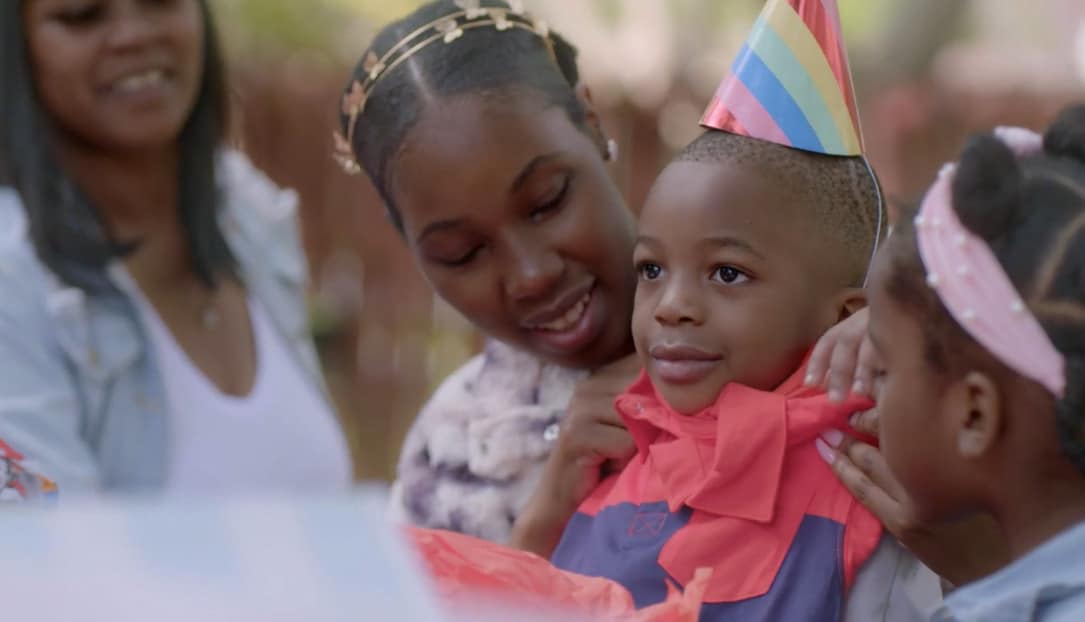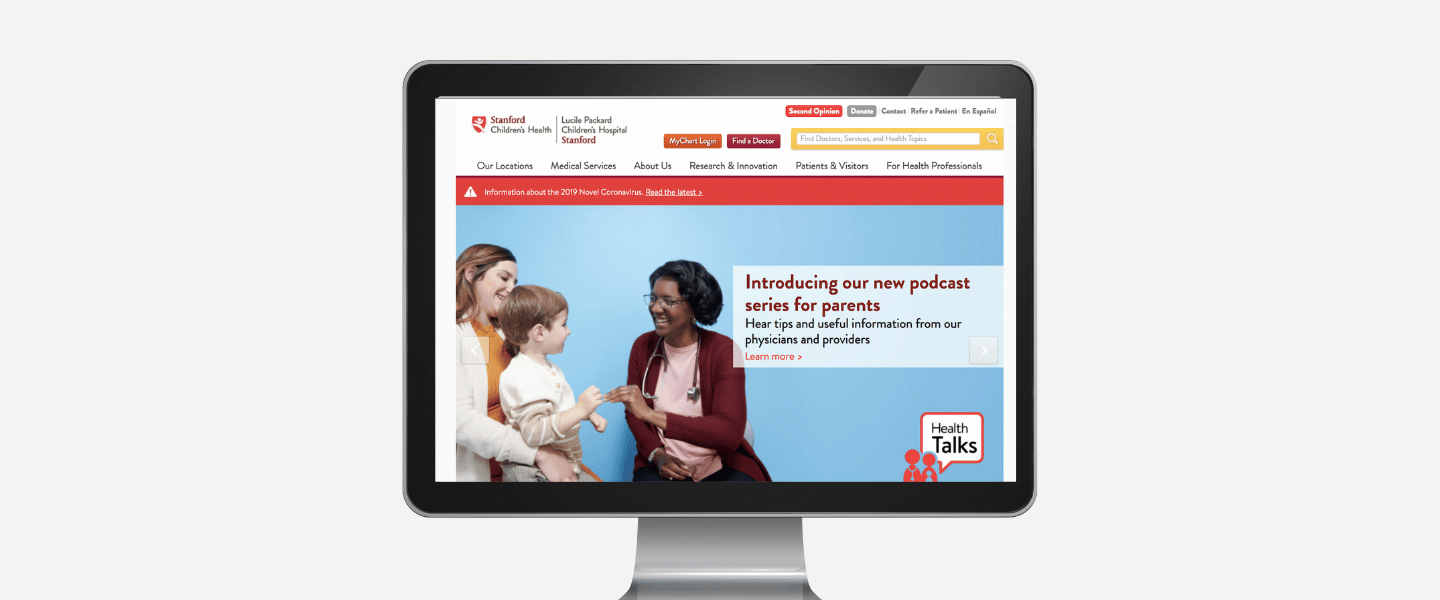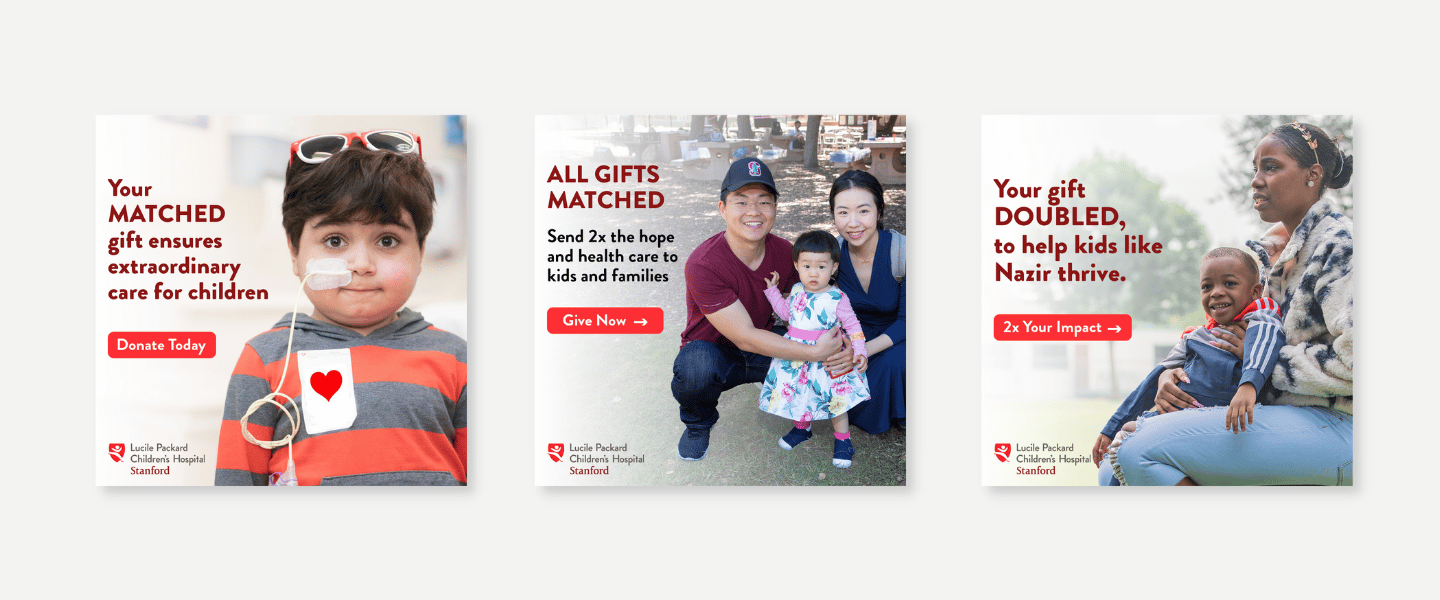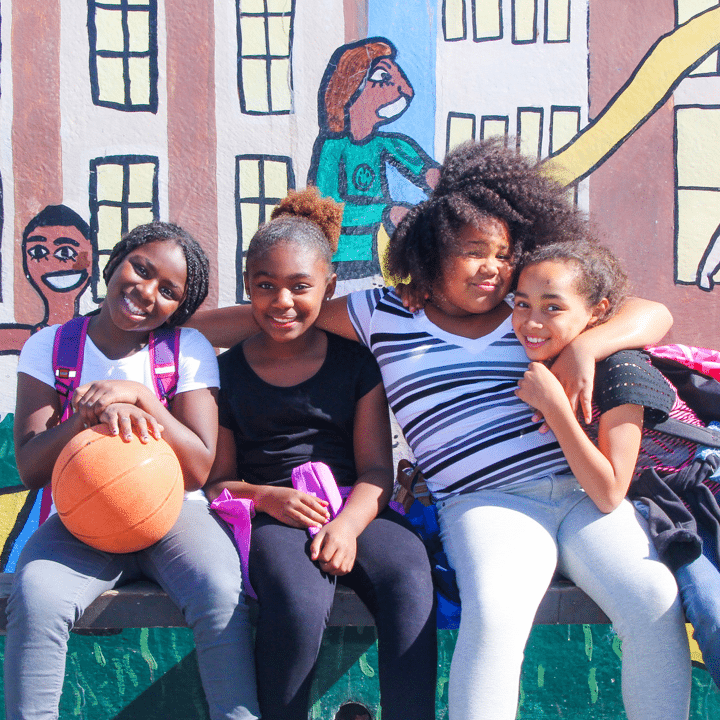For the Foundation, year-end giving is a time to return to the bread and butter of their mission, while pointing to the new urgency 2020 has brought to their work — and the ways in which they need donor support even more than they once did.
Leveraging story, imagery and video:
The Foundation centered their appeal around the story of a patient and his family who had received lifesaving care in 2020. Imagery and video captured the global moment that this was happening in and conjured ideas of the importance of looking after each other, our children and bringing happiness to all.
Variety keeps it fresh.
We let the calendar work for us. Many donors are quite responsive during key moments of the year, particularly Giving Tuesday and the final five days of the year. We promoted a match offer during these key moments and strategically increased volume.
To create variety we sent emails under several different email signers including: institutional signers (Support Packard Children’s (MATCH); Lucile Packard Team, etc.), doctors, fundraising and financial personnel, and parents of patients.
Also notably, the mid-month period; when giving typically drops off, the Foundation stayed top of mind, asking people to send notes of good cheer.
Here are just a few of our favorites:
“Happy holidays to our EXTRAORDINARY patients, families, and staff! Thank you for being you and for all of the heroic things you do that make Packard Children’s so special. You all truly make a difference. Wishing you joy and love this season.” — Deanna
“Hi!! Stay Strong! You guys are my heroes. You deserve so much. I admire your reliance and what you’ve gone through to get where you are now. Happy Holidays to you and your family!” — Keira





